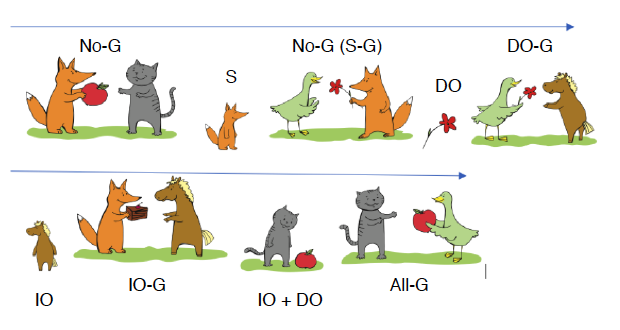These materials were designed for my task aiming to elicit ditransitive sentences in 4-year-old monolingual Croatian children. The aims of the task were to check how givenness and animacy affect the relative object order. The materials can be used for eliciting this kind of structures in different populations. The task was inspired by the puzzle design of CEGS by Sonja Eisenbeiss.
The images were designed for my task by Tanja Russita.
How to refer to the experimental materials: Velnić, Marta (2015) "Ditransitive elicitation task materials". Once the paper that describes this research is out, you may refer directly to the paper. The draft of the paper submitted to the Journal of Slavic Linguistics can be found here.
Brief description of my task and how the images were used
I used these images in order to test for the effects of givenness and animacy on word order. There are three sets of images: two sets have an animate Indirect Object (IO) and an inanimate Direct Object (DO) which is the prototypical situation we find in naturalistic speech, in the third set both objects are animate. I elicited the verbs 'give' and 'offer' in the first two sets and 'send' in the third set, but other verbs such as 'show' fit well with the images, so you can elicit verbs as you find best fit for your task.
In my task these images had to be placed on a puzzle board (example below) that acted as a barrier between me and the participant (children and adult controls alike), they had different shapes in order to fit the puzzle board. In between every action image, the participant was provided with an image of a single referent in order to strengthen what is given in the following condition. You can read the full methodology and results in the aforementioned draft.
